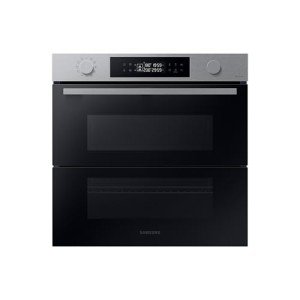The Future of Culinary Convenience: Integrated Ovens and Hobs
In the ever-evolving world of kitchen area design, integrated ovens and hobs are at the forefront of modern-day cooking development. These devices not only assure aesthetic appeal but likewise improve functionality and efficiency, changing how we prepare our meals. As property owners significantly look for to produce smooth, elegant, and easy to use cooking spaces, the combination of ovens and hobs provides a perfect option. This article explores what integrated ovens and hobs are, their advantages, and key factors to consider for those wanting to update their cooking area.
What Are Integrated Ovens and Hobs?
Integrated ovens and hobs are kitchen area devices flawlessly built into the cabinets or counters, rather than standing apart as separate entities. Integrated ovens are created to mix into cooking area systems, offering a flush surface with surrounding cabinetry. Similarly, integrated hobs are mounted straight into the counter top, developing a streamlined look. This minimalist design approach not just raises the visual appeal of the kitchen but likewise maximizes available area.
Kinds Of Integrated Ovens
Single Ovens: These standalone units are developed for simplicity and ease of use, featuring a single cooking chamber and multiple cooking modes such as baking, grilling, and roasting.
Double Ovens: Ideal for larger families or devoted cooks, double ovens offer 2 independent cooking compartments, enabling multiple meals to be prepared at the same time at various temperature levels.
Combination Ovens: Blending conventional baking and steam cooking, mix ovens use adaptability for various cooking needs, keeping moisture while guaranteeing completely prepared meals.
Kinds Of Integrated Hobs
Gas Hobs: These hobs permit accurate temperature control and instant heat, making them a favorite among professional chefs and cooking enthusiasts.

Induction Hobs: Known for their performance and security, induction hobs utilize electro-magnetic energy to heat pots and pans directly. They are fast to heat and cool down rapidly, decreasing the threat of burns.
Electric Hobs: Featuring smooth ceramic or glass surfaces, electric hobs are simple to tidy and provide an even heat distribution for a range of cooking designs.
Advantages of Integrated Ovens and Hobs
1. Area Optimization
With the trend of smaller sized home and open-concept homes, integrated devices help make the most of kitchen area. By fitting flawlessly into cabinetry, cooking areas can appear bigger and more open, decreasing mess and enhancing visual appeal.
2. Visual Appeal
Integrated ovens and hobs provide a smooth, contemporary appearance that fits well within various design themes. The ability to tailor kitchen cabinetry ensures that house owners can accomplish a cohesive appearance that matches their style, whether contemporary, traditional, or something in between.
3. Improved Functionality
Integrated devices frequently come with innovative features such as clever technology, self-cleaning alternatives, and different cooking modes. These enhancements not only enhance the cooking procedure but also improve usability, making preparing a pleasurable experience.
4. Safety Features
Integrated hobs, particularly induction designs, are considered more secure than traditional cooking surfaces. They cool off rapidly, reducing the risk of burns, and typically include functions like child locks and automatic shut-off for additional security.
Secret Considerations When Choosing Integrated Ovens and Hobs
1. Space and Layout
Before buying integrated home appliances, think about the space offered in your cooking area. Measure the cabinetry and countertops thoroughly to make sure a perfect fit, permitting appropriate ventilation and installation area.
2. Cooking Needs
Assess your cooking routines and choices. If you frequently amuse or cook big meals, a double oven may be the best option. Conversely, if you're a periodic chef, a single oven might suffice. Similarly, picking between inbuilt ovens , electric, or induction hobs will depend on your cooking design and comfort level.
3. Energy Efficiency
With rising energy expenses and growing environmental issues, selecting energy-efficient appliances can save cash in the long run. Try to find items with high energy ratings and features like programmable timers and eco-modes.
4. inbuilt ovens and Brand
Purchasing high-quality home appliances from credible brand names ensures toughness and performance. Checking out client reviews and looking for recommendations can help limit the very best alternatives tailored to your needs.
Conclusion
Integrated ovens and hobs are more than just kitchen area devices; they represent a shift towards a more functional, trendy, and effective method to cooking. As house owners prioritize smooth design, convenience, and advanced features, these integrated solutions will unquestionably form the kitchen areas of tomorrow. Whether renovating a kitchen or designing a new one from scratch, integrating ovens and hobs is an investment that guarantees to enhance both cooking experiences and the total aesthetic of the home.
